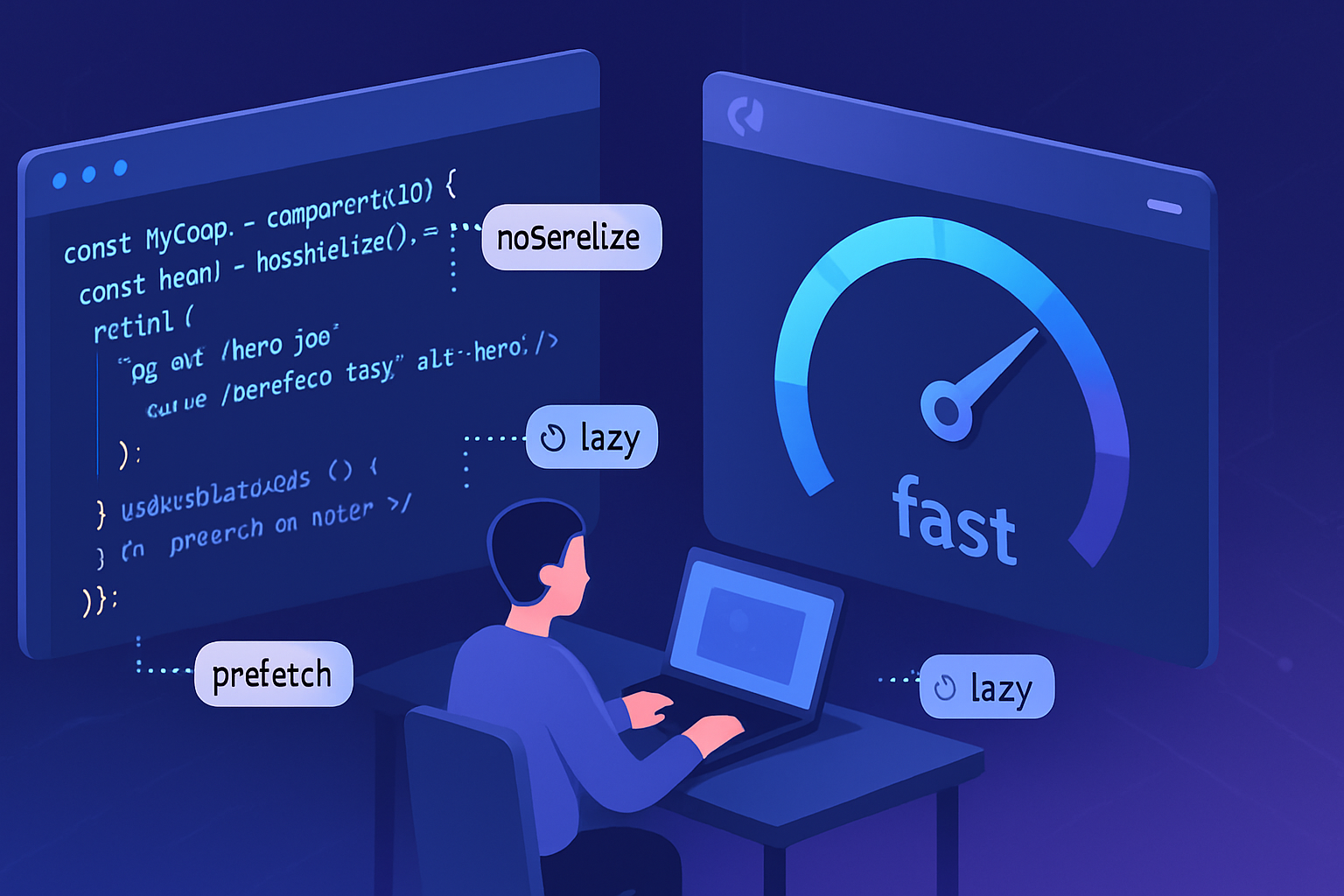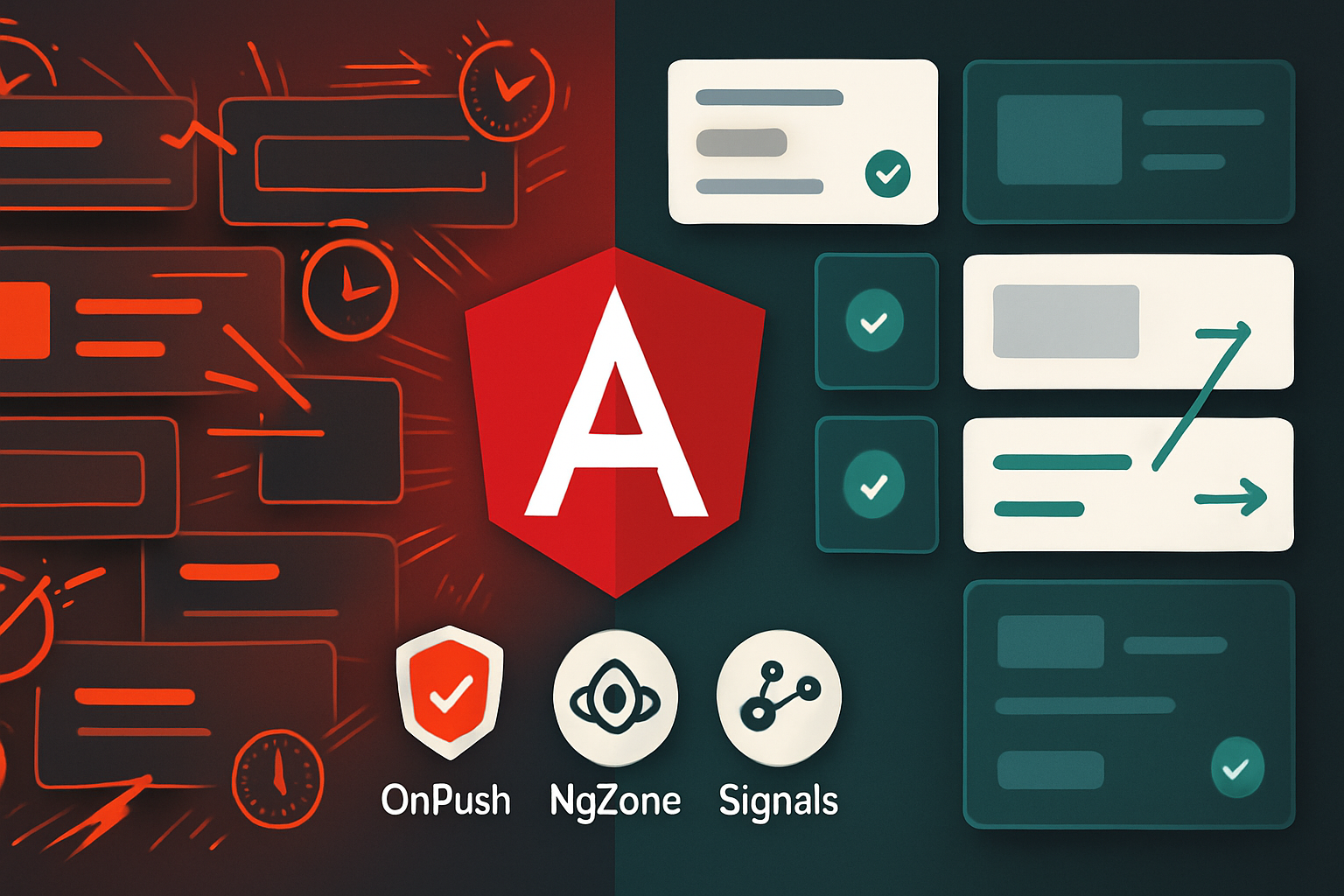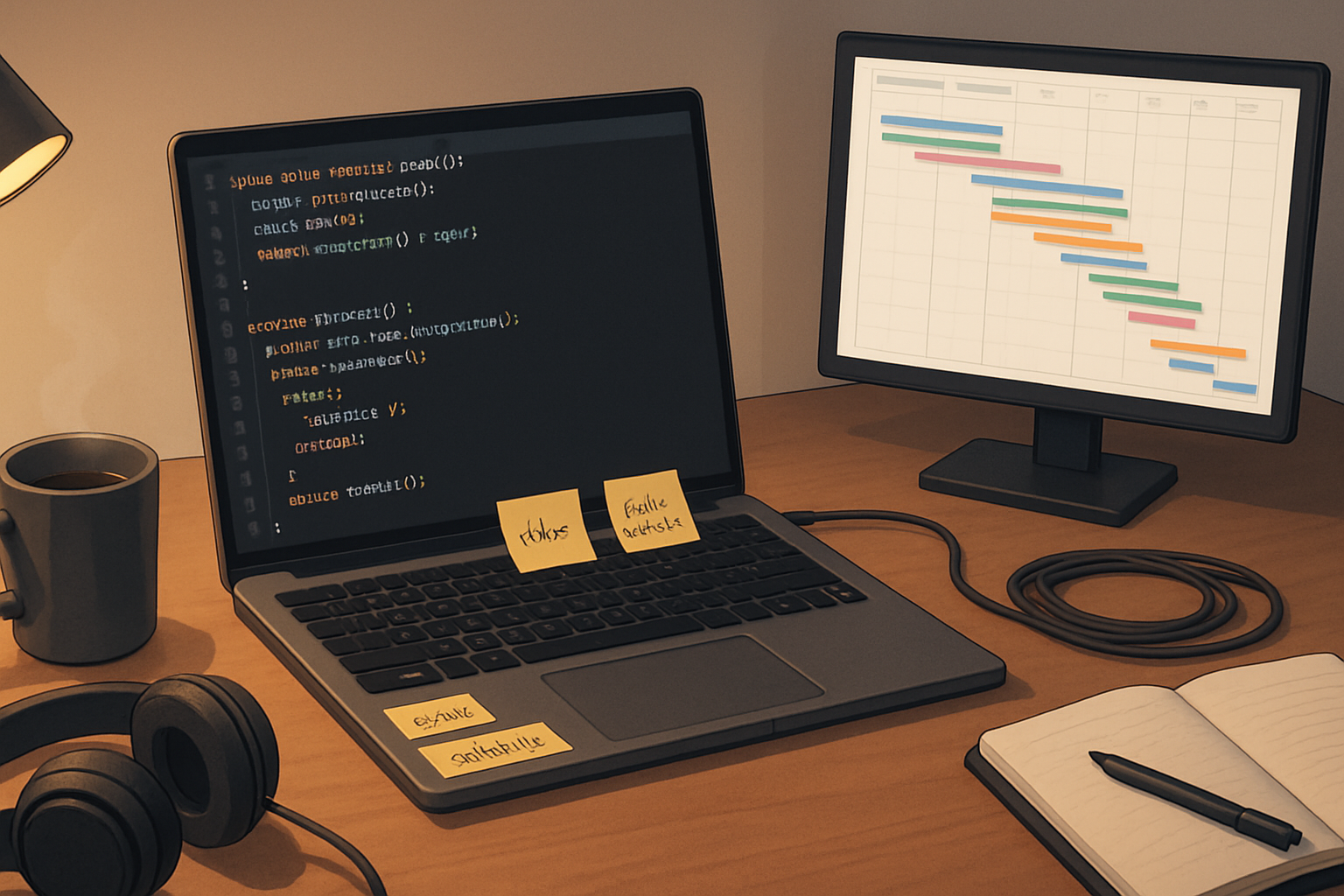· frameworks · 7 min read
Exploring Qwik's Optimal Performance: Speed Tips You Can’t Miss
Practical, Qwik-specific performance techniques - from minimizing serialized state with noSerialize to smart client-only tasks, lazy event handlers, prefetch strategies, and measurement tips - to make your Qwik apps feel instantaneous.

What you’ll get from this article
You’ll leave with concrete, Qwik-specific optimizations you can apply today to reduce payload, cut cold-start latency, and make interactions feel instantaneous. Expect little-known tricks (like noSerialize) alongside best practices for lazy loading, state design, event wiring, and measuring impact.
Qwik’s promise is resumability and near-zero hydration - but you still need to design carefully to achieve peak speed. Read on to find the tips that actually move the needle.
Quick primer: Why Qwik’s performance model changes the rules
Qwik is built around resumability and QRLs (Qwik Resource Locators). Instead of shipping a big bundle to hydrate the app, Qwik serializes the app state into the HTML and attaches tiny, lazy-loaded handlers (QRLs) that wake only when needed. That means your performance wins or losses often come from how much state you serialize and how you attach behavior - not just bundle size.
For docs and deeper concepts, see the official Qwik docs: https://qwik.builder.io/ and the resumability concept: https://qwik.builder.io/docs/concepts/resumability/
1) Minimize serialized state - the single biggest lever
What happens: Qwik serializes the application state into the HTML so the server-rendered page can “resume” without full hydration. Large or unnecessary data increases HTML payload and parsing time.
What to do:
- Keep the serialized state minimal. Only store what’s required to resume interactivity.
- Prefer transient values to client-only lifecycles instead of store fields that get serialized.
- Remove large caches, functions, or DOM refs from serialized objects.
Techniques and code examples
- Prefer useSignal for simple primitives and useStore for object graphs only when necessary.
- Use noSerialize to exclude large, non-serializable values from being embedded into the QData payload.
Example - use noSerialize to prevent serializing a large map or class instance:
import { component$, useStore, noSerialize } from '@builder.io/qwik';
export const BigStore = component$(() => {
const store = useStore({
// small serializable fields
count: 0,
// large or non-serializable - avoid serializing this
cache: noSerialize(new Map()),
});
return <button onClick$={() => store.count++}>Count: {store.count}</button>;
});Why this matters: noSerialize keeps the HTML snapshot tiny and parsing much faster.
Reference: https://qwik.builder.io/docs/api/core#noserialize
2) Lazy-load behavior: rely on $-suffixed APIs and QRLs
Qwik turns any function annotated with $ (e.g., component$, useClientEffect$, onClick$) into a lazy, serializable QRL. That means handlers are not shipped to the client until needed.
Tips:
- Use on:click$ (or the shorthand onClick$ in JSX) for handlers so they remain lazy.
- Avoid creating inline closures that capture large outer-scope state - those may force more data into the snapshot.
- Keep handler logic small or dynamically import heavy logic.
Example - lazy event handler with dynamic import:
import { component$ } from '@builder.io/qwik';
export const HeavyButton = component$(() => {
return (
<button
onClick${async () => {
// This code is lazy and will be fetched only when the user clicks
const { heavyOperation } = await import('./heavy');
heavyOperation();
}}
>
Run heavy task
</button>
);
});Why this matters: push rarely used code off initial payload and only load on interaction.
3) Use client-only hooks selectively: useClientEffect$, useVisibleTask$, useTask$
Qwik provides several lifecycle hooks with different execution timing:
- useServerMount$ - runs only on the server render. Good for server-only setup.
- useClientEffect$ - runs on the client when the component resumes.
- useVisibleTask$ - runs when the component becomes visible in the viewport.
- useTask$ - runs after state changes; used for reactive effects.
Practical rules:
- Move non-essential client-side computations into useVisibleTask$ so they run only when the user can see the component.
- Use useServerMount$ to prepare data server-side and avoid shipping work to the client.
- Avoid running heavy client-side work in useClientEffect$ unless it’s critical for immediate interactivity.
Example - defer analytics initialization until the component appears:
import { component$, useVisibleTask$ } from '@builder.io/qwik';
export const AnalyticsBadge = component$(() => {
useVisibleTask$(() => {
// initialize analytics or load a small script only when visible
import('./analytics').then(m => m.init());
});
return <div>Analytics initialized on view</div>;
});Why this matters: defers CPU and network work to moments when it matters - improving perceived speed.
Reference: https://qwik.builder.io/docs/api/core
4) Design your state model: prefer signals for local primitives
Signals (useSignal) are lighter-weight and serialize less than large stores. They’re excellent for local UI primitives (open/closed toggles, counters, flags), while useStore is useful for nested reactive objects.
Guidelines:
- Use useSignal for single-value reactive pieces.
- Use useStore for structured data you need to share across parts of the app.
- Don’t over-normalize to a monolithic store that drags along irrelevant data when resuming.
Example:
import { component$, useSignal } from '@builder.io/qwik';
export const Toggle = component$(() => {
const open = useSignal(false);
return (
<button onClick$={() => (open.value = !open.value)}>
{open.value ? 'Open' : 'Closed'}
</button>
);
});Why this matters: smaller, focused signals keep serialized state minimal and speed resumption.
5) Smart data fetching with useResource$ and route loaders
Qwik provides useResource$ and server route loaders (Qwik City) to fetch data on-demand, with strategies for streaming and lazy fetches.
Tips:
- Fetch critical data server-side so pages render fully without client fetches.
- Use streaming where appropriate to show content progressively.
- For non-essential data, prefer resource-based fetching that triggers on visibility or interaction.
Reference: Qwik resource docs and Qwik City guides: https://qwik.builder.io/docs/
6) Prefetching - move latency to idle or hover
Qwik City’s Link component supports prefetching strategies so you can fetch code and data before navigation happens. Prefetch on hover or intent instead of every link.
Patterns:
- prefetch on hover or on visible to fetch resources only when users are likely to use them.
- avoid aggressive prefetch for large pages; be selective.
This turns perceived latency into near-zero during real interactions.
7) Bundle and asset strategies (Vite + Qwik)
Even though Qwik pushes most logic to QRLs, bundle size still matters for shared libraries, CSS, and critical runtime.
Actionable items:
- Use code-splitting and dynamic import for heavy libraries.
- Analyze builds with tools like vite-plugin-visualizer or source-map-explorer.
- Tree-shake and avoid importing whole utility libraries (import specific functions).
- Extract critical CSS and defer non-critical styles.
Tools:
- Vite docs and plugins: https://vitejs.dev
- Visualizer plugin: https://www.npmjs.com/package/rollup-plugin-visualizer or vite-plugin-visualizer
8) Avoid capturing large closures in QRLs
When you define a handler or a lazy function, Qwik needs to serialize a pointer to the code and the values it captures. If your handler closes over big objects, that can force serialization of those objects.
Tip: define handlers that reference IDs or small primitives only - fetch or derive large data inside the handler via dynamic import or by reading a signal/store already present on resume.
Example - bad vs good
Bad:
const big = { massive: /* large object */ };
<button onClick$={() => console.log(big)}>Bad</button>Good:
<button onClick${async () => {
const data = await fetch('/api/get-big');
console.log(data);
}}>Good</button>Why this matters: avoid accidental serialization bloat.
9) Measure, profile, iterate - don’t guess
Optimize with data. Use tools like Lighthouse, WebPageTest, and the browser’s Performance tab. Measure:
- First Contentful Paint (FCP)
- Time to Interactive (TTI)
- Largest Contentful Paint (LCP)
- Total Blocking Time (TBT)
- Size of serialized qData (inspect HTML)
Links:
- Lighthouse: https://developers.google.com/web/tools/lighthouse
- MDN Web Performance: https://developer.mozilla.org/en-US/docs/Web/Performance
Also inspect the server-rendered HTML for qData payload size - that often reveals the largest problems.
10) Practical checklist to apply now
- Audit serialized snapshot size in HTML (search for qData or Qwik JSON blocks).
- Replace large store fields with noSerialize when appropriate.
- Convert simple UI state to useSignal.
- Move non-critical client work to useVisibleTask$.
- Use onClick$ / on:click$ and avoid capturing big closures.
- Dynamic import heavy operations inside event handlers.
- Use route prefetching judiciously (hover/intent-based).
- Run Lighthouse and bundle analysis after each major change.
Closing - small changes, big wins
Qwik changes the optimization landscape by making resumability the central concern. That also means some formerly common optimizations (like shipping everything at once) are now counterproductive. Trim what you serialize, defer what you can, and be deliberate about what you load when.
Do that, and your Qwik app will feel instant. Small decisions - noSerialize, signals instead of giant stores, lazy handlers - compound into a dramatically faster experience.
References
- Qwik - official docs: https://qwik.builder.io/
- Qwik concepts: Resumability: https://qwik.builder.io/docs/concepts/resumability/
- Vite: https://vitejs.dev/
- Lighthouse: https://developers.google.com/web/tools/lighthouse
- MDN: Web Performance: https://developer.mozilla.org/en-US/docs/Web/Performance



